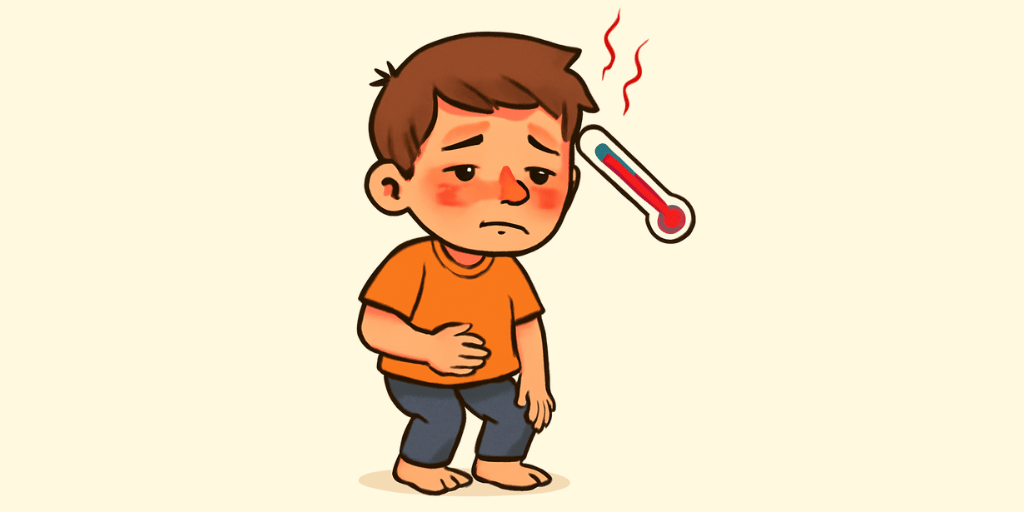Ayurvedic Name: Agantuja Jwara
Description:
Agantuja Jwara arises due to external factors such as infections, injuries, toxins, or emotional trauma. Unlike internally caused fevers (Nija Jwara), this fever originates from an external source but eventually disturbs internal Dosha balance, causing inflammation, swelling, rashes, or even psychological disturbances. Over time, if untreated, it can penetrate deeper tissues, which leads to chronic illness.
Signs & Symptoms:
- Sandhishoola (Joint Pain): Deep, throbbing, and migratory pain, worsened in cold or damp conditions.
- Sandhishotha (Joint Swelling): Inflammatory swelling with tenderness, often appearing symmetrically in both hands or knees.
- Stambha (Stiffness): Prolonged morning stiffness lasting more than an hour, making movement difficult.
- Sparsha Asahyata (Tenderness to Touch): Extreme sensitivity in affected joints due to Ama accumulation.
- Jwara (Fever): Mild to moderate fever due to the autoimmune inflammatory response.
- Gaurava (Heaviness in the Body): Feeling of sluggishness due to toxin buildup in the system.
- Agnimandya (Digestive Impairment): Weak digestion, bloating, and irregular appetite due to metabolic dysfunction.
- Kshamata (Fatigue): Persistent tiredness even with minimal exertion.
Diagnosis:
CBC and Patient History of Injury/Toxin Exposure
Risk Factors:
- Dietary Factors
Consumption of contaminated food or water leading to infections that can cause fever and pain.
Excess intake of heavy, spicy, or cold foods that disrupt the digestive system and aggravate Pitta dosha. - Lifestyle Factors
Exposure to environmental infections, particularly in crowded areas or during seasonal changes, increasing susceptibility to fevers.
Poor hygiene or unsanitary conditions leading to infections that trigger fever. - Medical Conditions
Viral and bacterial infections such as flu, typhoid, or malaria, which lead to fever and systemic pain.
Chronic inflammatory diseases that lower the body’s ability to fight infections.
Complications:
- Tissue Damage (Dhatugat Shotha): Prolonged external fever can cause damage to tissues and organs due to the body’s reaction to inflammation.
- Acute Infections (Shighra Graha): External fever is often caused by infections, which can spread rapidly if not addressed properly.
- Abscess Formation (Granthi Utpatti): Infections causing external fever may result in abscesses, which can lead to painful swelling and need for drainage.
- Organ Dysfunction (Karma-Vikriti): Chronic infections causing external fever can lead to organ dysfunction due to a long-lasting immune response.
- Chronic Fatigue (Dourbalya): Persistent fever can result in fatigue, malaise, and decreased immunity over time.
Epidemeology:
More common in individuals with infectious diseases such as malaria, flu, or pneumonia.
Typically affects people in environments with poor sanitation or crowded living conditions, such as in developing countries.
The incidence increases during seasonal changes, with infections like flu more common in colder months.
Affects both children and adults, though children under 5 years old are at higher risk of developing high fevers from infections.

